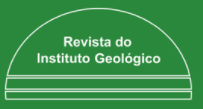Application of the radioactive carbon isotope 14C in the determination of residence times in aquifers
DOI:
https://doi.org/10.14295/derb.v42.743Keywords:
Radiocarbon; Groundwater dating; Case studies; Brazilian aquifersAbstract
The use of isotopes in hydrogeological studies is an important tool in the design of conceptual models for aquifers, as well as in the determination of parameters related to the recharge and to groundwater flow. The radioactive carbon isotope 14C, also known as radiocarbon, has a half-life of 5,730 years. The dating of groundwater using the radiocarbon method is carried out by estimating the time of radiocarbon decay during the flow of water in the aquifer. As the amount of carbon dissolved in water is not conservative, other sources can add carbon to the system through chemical reactions, such as the dissolution of carbonates present in the aquifer matrix. Thus, when estimating the ages of groundwater samples, correction models are often used. Despite the associated difficulties, radiocarbon dating is a powerful tool in the study of aquifers. The relatively low cost of the analyses, combined with a half-life that covers an important age range in the interpretation of hydrogeological processes, and the almost omnipresence of dissolved carbon in groundwater, makes it very convenient and used in the investigation of groundwater with residence times ranging from 500 to 40,000 years. This paper provides a summary of the theoretical basis behind this technique and its applications to hydrogeological studies, especially in Brazil, where 14C dating has been applied in the determination of residence times since the 1970’s, starting in Northeastern Brazil. Subsequently, in the 1980’s, studies were extended to aquifers located in Southeastern and Southern Brazil. Only recently have radiocarbon studies been performed in aquifers of the Amazon region. Some examples of this use are presented in this paper, as study cases of the usefulness of this important tracer.
Downloads
Downloads
Published
How to Cite
Issue
Section
License
Copyright (c) 2021 Derbyana

This work is licensed under a Creative Commons Attribution 4.0 International License.
Política de Acesso Livre:
A revista Derbyana oferece acesso livre ao seu conteúdo. Toda a coleção da Revista é disponibilizada de forma gratuita em https://revistaig.emnuvens.com.br/derbyana e no Portal de Periódicos Eletrônicos em Geociências – PPeGeo (http://ppegeo.igc.usp.br), resultado de parceria entre a Sociedade Brasileira de Geologia e o Serviço de Biblioteca e Documentação do Instituto de Geociências da Universidade de São Paulo.




















